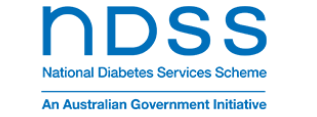Type 1 diabetes is a recognised disability in Australia. This information provides an introduction to anti-discrimination legislation to help you understand school obligations and students’ rights at school.
Legal framework
In Australia, both federal and state or territory laws protect students with disabilities, including type 1 diabetes, from discrimination in educational settings.
Federal Law
- The Disability Discrimination Act 1992 (Cth) mandates that schools must make reasonable adjustments to support students with disabilities. This ensures they can participate fully in education.
- Disability Standards for Education 2005 (Cth): These standards provide detailed guidance on how educational institutions can comply with the Disability Discrimination Act. Adhering to these standards ensures that schools meet their legal obligations.
State and Territory Laws
- Each state and territory has its own anti-discrimination or equal opportunity legislation.
- If there is any conflict between federal and state or territory laws, the federal legislation prevails.
Student’s rights: Parts 4 to 8 of the Disability Standards for Education 2005 (Cth) explains how education and training should be made accessible. The start of each part includes a note about what rights it gives to students.
Useful resources
- Explaining the Disability Standards for Education booklet
- Disability Standards for Education: A practical guide for individuals, families and communities
- Australian Human Rights Commission – Children’s Rights
For more resources visit our resource library page.
Reasonable adjustments
Reasonable adjustments are modifications or accommodations made by schools to assist students with disabilities, ensuring they have equal access to education. For students with type 1 diabetes, these adjustments might include:
- allowing time for blood glucose monitoring
- providing a private space for insulin administration
- permitting snacks during class to manage blood sugar levels.
Reasonable adjustments should be outlined in the student’s diabetes management plan and tailored to their individual needs.
When adjustment may not be required
Under the Disability Discrimination Act 1992 (Cth), educational institutions are generally expected to make reasonable adjustments to support students with disabilities. However, there are circumstances where an adjustment may not be enforced if it imposes an unjustifiable hardship on the school.
Exceptions
Unjustifiable hardship refers to situations where making a particular adjustment would cause significant difficulty or expense to the education provider. Determining whether a hardship is unjustifiable involves considering several factors, including:
- the nature and benefit of the adjustment for the student;
- the financial cost and resources available to the school;
- the impact on the school’s operations and other students; and
- the availability of financial or other assistance.
Before determining that an adjustment constitutes an unjustifiable hardship, schools should:
- assess how the adjustment could be implemented
- engage in discussions with the student and their family or carers
- Consult relevant experts or advisory bodies for guidance.
The responsibility to prove that an adjustment is an exception (i.e. unjustifiable hardship) lies with the education provider.
For more detailed information, Part 10 of the Disability Standards for Education 2005 (Cth) explains exceptions, or refer to Part 1, Section 11 of the Disability Discrimination Act 1992.
Collaborative approach
Determining appropriate reasonable adjustments involves a collaborative process:
- Consultation: Schools are required to consult with the student (where appropriate), their parents or carers, and relevant health professionals. This ensures that the adjustments meet the student’s needs and are feasible for the school to implement.
- Considerations: When deciding on adjustments, schools should consider:
- the impact of the student’s disability
- the student’s and parents’ or legal guardian’s views
- the effect of the adjustment on the student’s educational opportunities
- the impact on school staff and other students
- the cost and resources required to implement the adjustment.
Adjustments need to be reasonable for the school, based on all of the circumstances, as well as of benefit to the student.
Importance of documentation
All agreed-upon adjustments should be documented in the student’s diabetes management plan. This ensures clarity and consistency in the support provided.
State and territory support and information
If you’re interested in further reading on this topic, click on your state or territory.
Disclaimer:
The content of this page is only intended to provide a general guide to the subject matter. The exact legal position that applies will always depend on your individual and surrounding circumstances. The information on this page does not in any way constitute legal advice and should not be relied upon as such. If you need legal advice, we recommend that you consult with a qualified legal professional for specialist advice about your specific circumstances.
Last updated: September 2025



